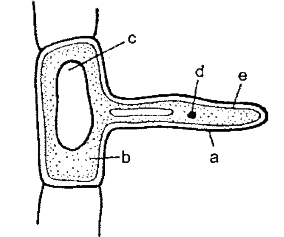Give two important properties of graphite.
Step-by-Step Text Solution:
1. Definition of Graphite:
- Graphite is an allotrope of carbon, which means it is one of the different structural forms in which carbon can exist.
2. Structure of Graphite:
- In graphite, carbon atoms are arranged in a hexagonal lattice. Each carbon atom is bonded to three other carbon atoms, forming layers of hexagonal shapes.
3. First Important Property - Electrical Conductivity:
- One key property of graphite is its ability to conduct electricity. This occurs because each carbon atom in graphite has one unbonded electron that is free to move throughout the structure. This delocalized electron allows graphite to conduct electricity, making it unique among non-metals.
4. Second Important Property - Lubrication:
- Another important property of graphite is its slippery texture. The layers of carbon atoms in graphite are held together by weak van der Waals forces, which allow the layers to slide over each other easily. This characteristic makes graphite an excellent lubricant, which is why it is used in various applications, including in automobile industries and as the core material in pencils.
Summary of Important Properties:
- Electrical Conductivity: Graphite can conduct electricity due to the presence of delocalized electrons.
- Lubrication: Graphite has a slippery texture, allowing its layers to slide over each other, making it useful as a lubricant and in writing instruments like pencils.
---
- Graphite is an allotrope of carbon, which means it is one of the different structural forms in which carbon can exist.
- In graphite, carbon atoms are arranged in a hexagonal lattice. Each carbon atom is bonded to three other carbon atoms, forming layers of hexagonal shapes.
- One key property of graphite is its ability to conduct electricity. This occurs because each carbon atom in graphite has one unbonded electron that is free to move throughout the structure. This delocalized electron allows graphite to conduct electricity, making it unique among non-metals.
- Another important property of graphite is its slippery texture. The layers of carbon atoms in graphite are held together by weak van der Waals forces, which allow the layers to slide over each other easily. This characteristic makes graphite an excellent lubricant, which is why it is used in various applications, including in automobile industries and as the core material in pencils.
- Electrical Conductivity: Graphite can conduct electricity due to the presence of delocalized electrons.
- Lubrication: Graphite has a slippery texture, allowing its layers to slide over each other, making it useful as a lubricant and in writing instruments like pencils.
Topper's Solved these Questions
- CARBON AND ITS COMPOUNDS BOOK - ICSECHAPTER - CARBON AND ITS COMPOUNDS EXERCISE - Check your progress (Answer the following)
5 Videos
- CARBON AND ITS COMPOUNDS BOOK - ICSECHAPTER - CARBON AND ITS COMPOUNDS EXERCISE - Exercise (Tick the most appropriate answer)
7 Videos
- CARBON AND ITS COMPOUNDS BOOK - ICSECHAPTER - CARBON AND ITS COMPOUNDS EXERCISE - EXERCISES (G GIVE REASONS FOR THE FOLLOWING)
6 Videos
- CARBON & ITS COMPOUNDSBOOK - ICSECHAPTER - CARBON & ITS COMPOUNDSEXERCISE - OBJECTIVE TYPE QUESTIONS
23 Videos
- CHEMICAL REACTIONS BOOK - ICSECHAPTER - CHEMICAL REACTIONS EXERCISE - Think and answer
5 Videos
Similar Questions
Give two important properties of hard water.
View SolutionGive two important properties of carbon dioxide.
View SolutionWrite the names of different types of muscles. Explain two important properties of muscle.
View SolutionStudy this structure of a root hair and answer the following:

Give one important property of part 'e'.
View SolutionHow is ethyl alcohol prepared ? Give its important properties and uses.
View SolutionDescribe the important properties of enzymes.
View SolutionWrite the important properties of muscles.
View SolutionHow was neutron discovered? Describe the important properties of neutron.
View SolutionList two important properties of skeletal muscles.
View SolutionGive two important features of phycomycetes.
View Solution
